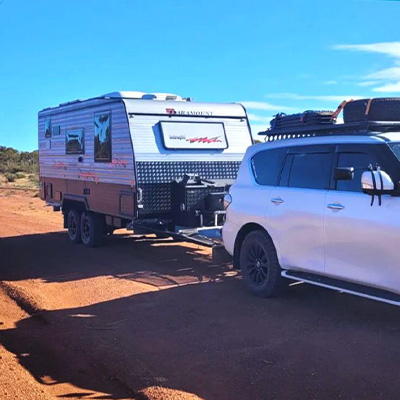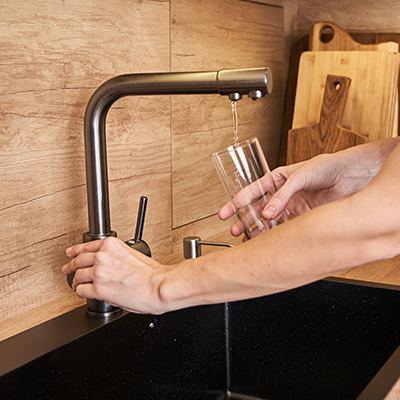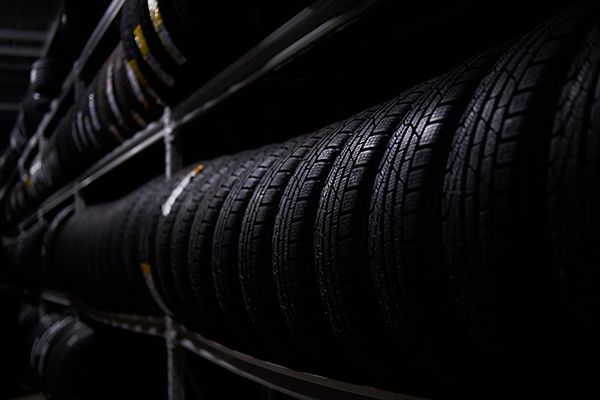
Introduction
Tyres are the first and only point of contact between the caravan and the road when hitched up to your tow vehicle. As such they play a very important role. In Australia regulations that govern the design and construction of tyres are specified in the ADR (Australian Design Rules) – specifically in ADR 23. The ADR’s are periodically reviewed by the Australian, government to ensure that they are up to date with international developments and new technologies – the last for ADR23 being in 2006. The Australian Design Rules are very specific and even have guidelines on how the tyre ratings must be displayed on the side wall of the tyre.
Caravanners who have been on the road for a long time know the importance of tyre quality and maintenance. They are usually very well versed in methods of preventing excessive tyre wear, and ensuring that the tyre pressures are always suitable for the current terrain. However even some of the most accomplished travellers, are none the wiser when it comes to ratings and codes mentioned on the sidewall of their caravan tyre. All most people usually know about the code is how to find the tyre diameter (inner diameter) and the tyre width.
Meaning of the Lettering on Tyre SideWall
This article aims at explaining to the common layman what the various codes on the sidewall of their caravan tyre means.
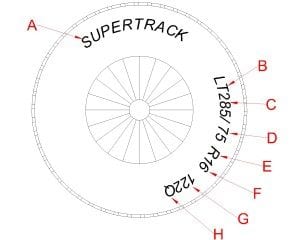
Fig.1 Typical Tyre Sidewall Lettering
Refer to Fig. 1 above to find relative positions of lettering for the codes explained below.
Positions of some of the lettering may vary depending on brand of tyre.
A
Branding
This specifies the tyre manufacturer and model or make.
B
Vehicle Class or Intended Use
Single or two letters indicating the intended use or vehicle class that the tyre is suited/designed for. Variations are:
- P – Passenger Car
- LT – Light Truck – This Is the most common rating found on caravans
- ST – Special Trailer
- T – Temporary – This is primarily intended for space saving spare wheels
C
Tyre Section Width
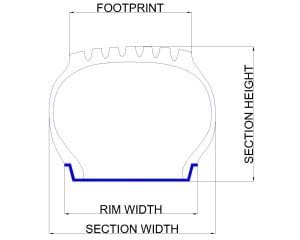
Fig.2 Tyre Sectional View
This number indicates the nominal width of the tyre cross-section or profile in millimetres. This measurement is taken at the widest point in the tyre when it is fully inflated to the rated/specified cold pressure by the manufacturer. It does not include the thickness of the lettering on the side wall. Usually the actual tread or footprint is less than the section width. However in the case of most mud-terrain tyres the tread is chunkier a sticks out the sides, almost same as or sometimes slightly greater than the sectional width.
D
Aspect Ratio
The aspect ratio is an indication of the sidewall height expressed as a percentage of the section width of the tyre. Mathematically speaking:
E
Internal Fabric Construction
Originally cotton, now steel mesh is used in the construction of tires. Dpending on how the mesh is layed out there are different types:
- B – Bias belt
- D – Diagonal
- R – Radial. This is the most common construction method, that has replaced the previous two types due to more strength while still allowing for a soft and stable ride.
F
Wheel Diameter
This is always a two digit number that expresses the inner diameter of the rim that the tire will fit on – in inches. Internationally inches are the most common unit used to indicate wheel size. Which probably explains why the Imperial units are used while most other measurements are usually expressed in metric form.
G
Load Index
The load index is a 2-3 digit numerical code that indicates the maximum vertical load each tyre can individually handle. Note that the load index is the rating of the individual tyre only, not the axle pair. If each tyre is rated at 1200kg, the axle pair can carry 2400kg.
The load index value corresponds to the maximum weight in kilograms it can handle according to the table below:
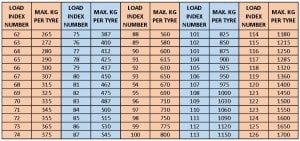
H
Speed Rating
A single letter is used to represent the speed rating. This speed rating refers to the maximum speed that permissible when the tyre is carrying a load specified by the Load Index.
